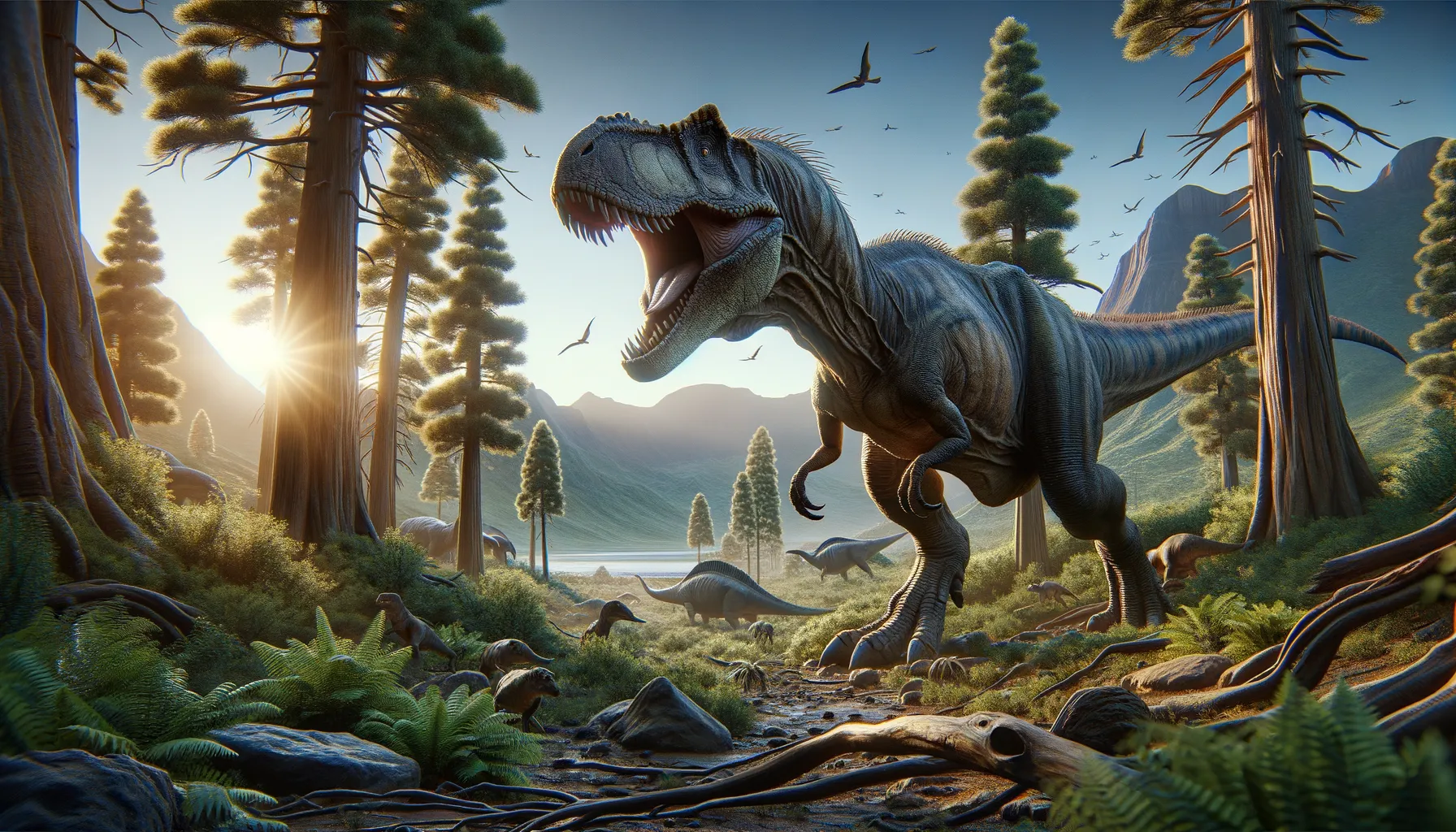
Hypsirhophus
A blast from the Jurassic past!
Period
triassic
Length
Could reach lengths of up to 9 meters.
Height
Approximate height of 3 meters.
Weight
Roughly estimated at 1,500 kilograms.
Hypsirhophus was a theropod dinosaur that roamed North America during the Jurassic period. This medium-sized carnivorous dinosaur is lesser-known due to fragmentary fossils but played a role in the complex ecosystem of its time. With its moderate speed, it likely preyed on smaller vertebrates and potentially scavenged. Fossils of Hypsirhophus have provided paleontologists limited but intriguing insights into the diversity of theropods during its era.
Diet
Hypsirhophus was primarily carnivorous, preying on smaller vertebrates. Its diet might have also included carrion, as it was an opportunistic feeder.
Hunting
It likely used ambush tactics to capture prey, relying on its moderate speed and surprise. Due to its size, it may not have been the top predator but was an efficient hunter in its niche.
Environmental challenges
Hypsirhophus faced challenges such as competition with other predators and environmental changes typical of the Jurassic era. Shifts in vegetation and climate could have impacted its food sources and habitat. Additionally, surviving alongside larger predators required adaptability and resourcefulness.
Speed
Moderate, capable of short bursts of speed.
Lifespan
Estimated to be around 20-30 years.
First discovery
Discovered in the late 19th century in North America.
Fun Facts
- Hypsirhophus was a type of theropod dinosaur that lived during the Late Cretaceous period, approximately 70 million years ago.
- Hypsirhophus is known from very limited fossil materials, which makes it a bit of a mystery for paleontologists.
- Its name, Hypsirhophus, means 'high crest', likely referring to a distinctive feature on its head or back.
- The fossils of Hypsirhophus were first discovered in North America, adding to the rich diversity of theropods in that region.
- Despite being a carnivorous dinosaur, very little is known about its specific diet due to sparse fossil evidence.
- Hypsirhophus was named by the famous paleontologist Othniel Charles Marsh in the late 19th century.
- This dinosaur contributes to understanding the diverse ecosystem of the Late Cretaceous, despite its enigmatic nature.
Growth and Development
Hypsirhophus grew relatively quickly in its early years to deter predators. Its development included strengthening its legs and jaws for hunting efficiency. The growth rate likely slowed as it matured, with individuals reaching full size in about a decade.
Habitat
Hypsirhophus inhabited forested regions interspersed with open areas. These environments provided ample cover for ambush hunting strategies. Water sources within these habitats were crucial, not just for hydration but also for attracting prey.
Interaction with other species
Hypsirhophus likely encountered several other dinosaur species, both as competitors and potential prey. Its interactions would have included skirmishes over territory and food. Cooperation was probably rare, as it usually focused on solitary hunting tactics.
Natural lifespan
Its natural lifespan could have extended up to 30 years.
Reproduction
Reproduction involved laying clutches of eggs, possibly in secluded nests. Parental care might have been minimal, with young expected to fend for themselves shortly after hatching. Egg-laying sites were likely chosen for safety and environmental stability.
Social behaviour
Hypsirhophus was probably more solitary than social, focusing on individual survival and hunting. Interaction with others of its kind might have occurred during brief mating periods. Dominance displays could have been part of these interactions.
Fossil locations
Fragments of Hypsirhophus have been primarily discovered in parts of North America, indicating its preference for these regions. These fossil records, though limited, have helped paleontologists piece together aspects of its lifestyle and physiology.
